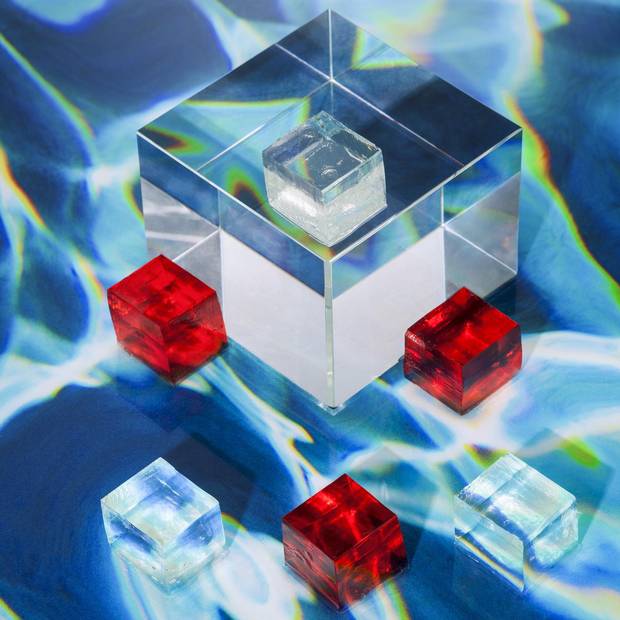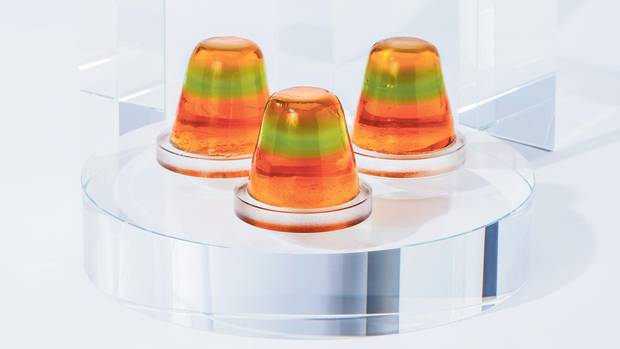Unless you're eight and celebrating your birthday, the sight of colourful jelly at a party rarely inspires expectations of a good time to come. It might remind you of that Sunday afternoon, during your college days, when you nursed a brutal hangover brought on by downing a tray of sugary vodka set in Dixie cups. Or, perhaps, it brings back memories of trying to convince Granny that, as delicious as her potluck staple multicoloured, marshmallow-pocked Jell-O salad was, you couldn't possibly eat another bite. And let's not even talk about aspic.
But, thanks to a few creative mixologists – most notably the British boozy jelly specialists Bompas and Parr – there is new hope for gelatin as an entertaining essential in the form of bite-sized versions of otherwise classi-cally crafted cocktails. Think man attan cubes and dark and stormy domes that can be made in advance and passed to guests, freeing up a host from hours of bartending duty.

Hudson Hayden/for The Globe and Mail
Recipe: Campari & lychee jelly
Though gelatin is easiest to find in powdered form, these recipes call for leaf or sheet gelatin, which can be sourced online or at specialty grocery stores. The sheets help jellies set more clearly but, in a pinch, you can still use the powder by substituting one teaspoon per sheet. Make sure to soak the gelatin in sufficiently cold liquid that it dissolves properly. Jelly is, thankfully, very forgiving, and if you add too much or too little gelatin, you can gently re-melt your jelly and add more liquid or gelatin before setting it again.
Dry cocktails – say, a martini – don't taste good in jelly form so sugar syrup is an important element in many of these recipes. To make it, bring an equal volume of sugar and water to a boil before cooling it down. Sugar also contributes to the gelling effect, as does alcohol in lower concentrations. Anything over 40 per cent will set poorly so, alas, you won't be able to make pure gin jelly.

Hudson Hayden/for The Globe and Mail
While you can pour jelly into just about anything hollow to give it a unique shape, getting it out can prove tricky depending on the form. Metal vessels like miniature muffin tins work well, as do silicone baking moulds. For jellies that get carved up into cubes, try a loaf or brownie pan but don't use anything ceramic or too thick.
To remove the jelly, dip the mould in hot water for a few seconds (more if you're using silicone or plastic). Invert the pan, pulling the jelly gently to one side until it releases. Lightly wetting your hands, the serving platter and the jellies will make them easier to handle. Unmoulding can be finicky, but don't worry if you break your first jelly or melt it too much. The chef gets to eat all the mistakes, after all.
More recipes:

Hudson Hayden/for The Globe and Mail

Hudson Hayden/for The Globe and Mail

Hudson Hayden/for The Globe and Mail